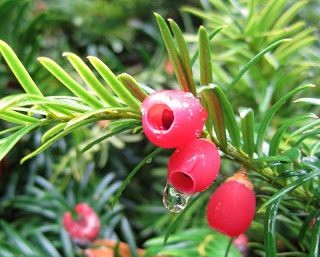
Anticancer Plants - Taxus Brevifolia.
Authors.
Naira Chicoyan,Ph.D ,Professor.Head of Pharmacognosy Deparment of Yerevan State Medical University.
Karine Dumanyan,Ph.D ,Professor, Pharmacognosy Deparment of Yerevan State Medical University.
Hayk S. Arakelyan. Full Professor in Medicine,
Doctor of Medical Sciences, Ph.D , Grand Ph.D .
Senior Expert of Interactive Clinical Pharmacology , Drug Safety, Treatment Tactics, General Medicine and Clinical Research. President of Rare and Incurable Diseases Association.
Yerevan-Armenia, Tokyo-Japan.
Introduction.
Paclitaxel is a powerful antineoplastic drug found in the Pacific yew tree (Taxus brevifolia) and is used in the treatment of malignant ovarian and breast cancer. Paclitaxel stabilizes polymerized microtubules and enhances microtubular assembly, forming unorganized and decentralized microtubules in the cytoplasm. Yew, Taxus brevifolia, the Western yew, is a tree of the family Taxaceae found in the western United States. Various yew preparations have been used in folk medicine, and an anticancer agent, Taxol, extracted from yew, has been shown to be clinically effective.
Chemical Composition of Taxus Brevifolia.
The Pacific yew is poisonous because it contains at least 11 alkaloids, known collectively as taxines. The structure of only two of the alkaloid constituents is known: taxine A, which accounts for 30%, and taxine B, which accounts for 2%. Paclitaxel is a pseudoalkaloid but not a constituent of taxine because its nitrogen is acylated with benzoic acid and has no basic principle. The concentration of paclitaxel in yew bark is low, only 0.01%.
Health Benefits of Taxus Brevifolia.
It has been used by the native populations for treating common cold, cough, fever, and pain. Its uses are described in Ayurveda and Unani medicine. It received attention recently as its leaves and bark were found to be the prime source of taxol, a potent anticancer drug.
All parts of the plant, except the fleshy fruit, are antispasmodic, cardiotonic, diaphoretic, emmenagogue, expectorant, narcotic and purgative. The leaves have been used internally in the treatment of asthma, bronchitis, hiccup, indigestion, rheumatism and epilepsy.
Historically, the yew has been highly valued for its dense, resilient, decay-resistant, tight-grained wood and its medicinal properties. The Greeks named the yew toxus in reference to its use for making a strong bow (toxon), and its poisonous nature (toxikon). It was used as an animal and fish poison by primitive cultures as well as for murder and suicide. In the first century AD, Claudius suggested its use as an antidote for viper bites. Europeans used it as an abortifacient as well as to treat heart ailments and hydrophobia.2 Native Americans used the yew for many ailments, as follows:
Rheumatism.
Lung ailments.
Colds and fever.
Pain and numbness.
Paralysis.
Scurvy.
Stomachache.
Bowel ailments.
Dysmenorrhea.
Gonorrhea.
Women ate yew berries to prevent conception. Youths rubbed smooth sticks of yew on their developing bodies to gain its strength. Both the bark and the leaves have been brewed for tea, and powders have been made from the bark alone. The fleshy red aril (berry) that surrounds the seed is not poisonous, although the seed itself is.4
There is a lot of folklore about the yew’s supernatural powers. Because it is a slow-growing, long-lived tree, it was associated with immortality and used in spells to raise the dead.5 Because it was regarded as among the most potent of trees for protection against evil, it was considered unlucky to cut down or damage a yew tree. Many were planted in churchyards/graveyards and alongside homes for protection. Specimens survive today in spite of main trunks being hollowed out from decay following hundreds of years of existence.
If you have any questions concerning “Anticancer Plants - Taxus Brevifolia”, interactive clinical pharmacology , or any other questions, please inform us .
Naira Chicoyan,Ph.D ,Professor.Head of Pharmacognosy Deparment of Yerevan State Medical University.
Karine Dumanyan,Ph.D ,Professor, Pharmacognosy Deparment of Yerevan State Medical University.
Hayk S. Arakelyan. Full Professor in Medicine.